![]()
![]()
![]()
Use LEFT and RIGHT arrow keys to navigate between flashcards;
Use UP and DOWN arrow keys to flip the card;
H to show hint;
A reads text to speech;
76 Cards in this Set
- Front
- Back
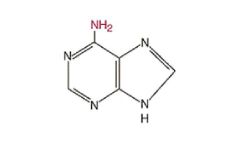
adenine numbering
|

|
|
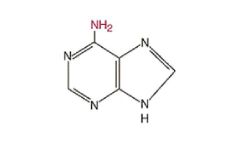
|

adenine
|
|
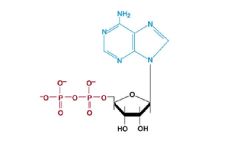
|

adenosine 5'-diphosphate (ADP)
|
|
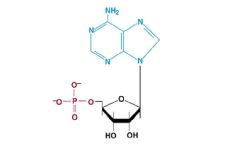
|

adenosine 5'-monophosphate (AMP)
|
|
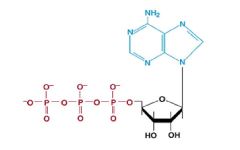
|

adenosine 5'-triphosphate (ATP)
|
|
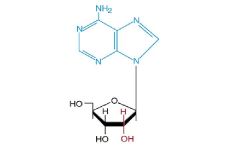
|

adenosine
|
|
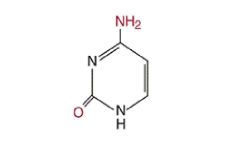
|

cytosine
|
|
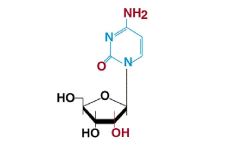
|

cytidine
|
|
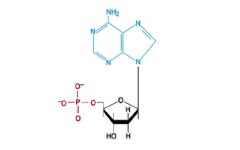
|

deoxyadenosine 5'-monophosphate (dAMP)
|
|
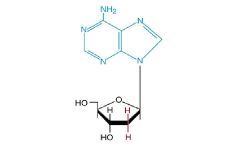
|

deoxyadenosine
|
|

|

guanine
|
|
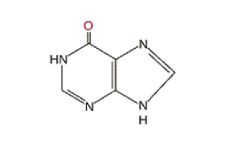
|

hypoxanthine
|
|

|
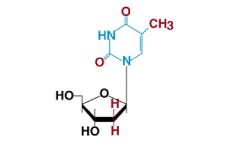
thymidine
|
|
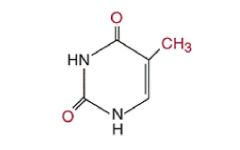
|

thymine
|
|

uracil numbering
|
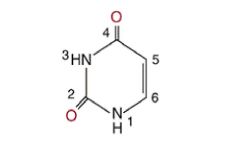
|
|

|
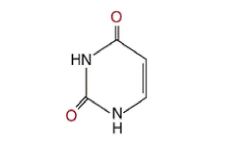
uracil
|
|
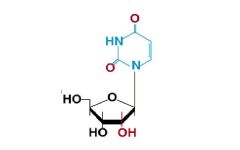
|

uridine
|
|
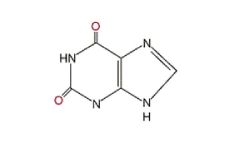
|

xanthine
|
|
|
bases and nucleosides can readily cross most cell membranes, but nucleotides and deoxynucleotides are trapped by this
|
negative charge of phosphate group(s)
|
|
|
concentration of ribonucleotides
|
millimolar
|
|
|
concentration of deoxyribonucleotides
|
micromolar
|
|
|
predominant form of nucleotides and deoxynucleotides in cells
|
triphosphate (>70%)
|
|
|
cytosine and thymine are derived form this
|
uracil
|
|
|
in purine synthesis:
base - ? nucleoside - ? nucleotide - ? |
base - hypoxanthine
nucleoside - inosine nucleotide - inosinate/inosine-5'MP (IMP) |
|
|
building purine ring requires ___ ATP
|
7
|
|
|
step 1 of purine synthesis: synthesis of PRPP
___ (produced by ___) --> PRPP catalyzed by ___ |
ribose-5-phosphate (produced by pentose shunt pathway) --> PRPP
catalyzed by PRPP synthase |
|
|
regulates PRPP synthase
|
(+) Pi
(-) ADP also... (-) AMP (-) GDP |
|
|
step 2 of purine synthesis: synthesis of PRA
___ atom added catalyzed by ___ |
step 2 of purine synthesis: synthesis of PRA
N9 atom added catalyzed by glutamine PRPP amidotransferase |
|
|
most important regulatory step in purine synthesis
|
synthesis of PRA (step 2 adding N9)
|
|
|
regulates glutamine PRPP amidotransferase
|
(+) PRPP
(-) IMP (-) AMP (-) GMP (one site binds IMP and GMP, other binds AMP) |
|
|
step 4 of purine synthesis: ___ deliver C8
catalyzed by ___ |
N10-formal-tetrahydrofolate delivers C8
transformylase activity |
|
|
step 6 of purine synthesis: closure of ___ ring
|
imidazole ring
|
|
|
only part of aspartate that is retained in purine synthesis
(rest cleaved off as ___) |
N1
(fumarate) |
|
|
fumarate can be used in this
|
tricarboxylic cycle
|
|
|
step 10 of purine synthesis: ___ delivers C2
catalyzed by ___ |
N10-formyl-tetrahydrofolate delivers C2
transformylase activity |
|
|
1st step in branched pathway for synthesis of AMP or GMP:
- ___ to form XMP (to become GMP) catalyzed by ___ regulated by ___ OR - ___ to form adenylosuccinate (to become AMP) catalyzed by ___ regulated by ___ |
- oxidation of C2 to form XMP (to become GMP)
catalyzed by IMP dehydrogenase regulated by GMP (-) OR - substitution of Asp for C=O to form adenylosuccinate (to become AMP) catalyzed by adenylosuccinate synthetase regulated by AMP (-), GTP (+) |
|
|
2nd step in branched pathway for synthesis of AMP or GMP:
-substitution of ___ to form GMP (brought in by ___) catalyzed by ___ regulated by ___ OR -removal of ___ to form AMP catalyzed by ___ |
-substitution of C-NH2 for C=O to form GMP (brought in by glutamine)
catalyzed by GMP synthetase regulated by ATP (+) OR -removal of fumarate to form AMP catalyzed by adenylosuccinase |
|
|
performed with purines to increase TCA intermediate under stress
|
AMP --> IMP --> AMP + fumarate
(just for the purpose of removing fumarate) |
|
|
deficiency of ___ leads to muscle cramps during exercise
|
AMP deaminase (can't make IMP to convert back to AMP to release fumarate)
|
|
|
in purine nucleotide degeneration, nucleotides lose ___ then lose ___
|
PO4 then ribose
|
|
|
purine nucleotide degeneration is catalyzed by ___
|
xanthine dehydrogenase/xanthine oxidase
|
|
|
final produce of purine nucleotide degeneration
|
uric acid
|
|
|
may cause gout if it precipitates in joints
|
uric acid (final produce of purine degeneration)
|
|
|
inhibits xanthine oxidase to prevent gout
|
allopurinol
|
|
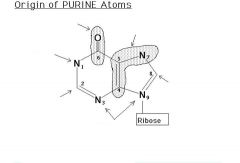
|

|
|
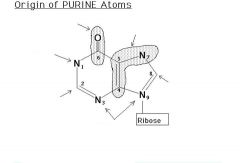
order of pieces added
|

|
|
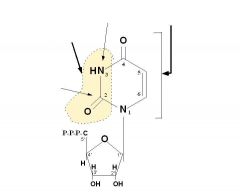
|

|
|
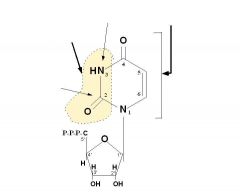
order of pieces added
|

|
|
|
cause of gout:
___ --> increased glucose-6-PO4 --> pentose shunt flux --> increased R-5-P --> ___ |
beta glucose-6-phosphatase
PRPP |
|
|
cause of gout:
elevated level of this enzyme |
PRPP synthetase
|
|
|
cause of gout:
loss of feedback inhibition of ___ by ___ |
glutamine PRPP amidotransferase by AMP, GMP and IMP
|
|
|
cause of gout:
decreased ___ --> increased PRPP --> increased ___ |
decreased HGPRT
increased purine biosynthesis |
|
|
sex-linked gene on x chromsome leading to men getting more gout than women if mutated
|
HGPRT
|
|
|
partial decreased in HGPRT --> ___
severe decreased or lack of HGPRT --> ___ |
gout
lesch-nyhan syndrome |
|
|
added last in pyrimidine synthesis
|
ribose
|
|
|
pyrimidine synthesis:
base - ? nucleoside - ? nucleotide - ? |
base - uracil
nucleoside - uridine nucleotide - uridylate (UMP) |
|
|
cofactor used only for dTMP synthesis
|
folate cofactor
|
|
|
3 parts of trifunctional enzyme in pyrimidine synthesis
|
(CAD)
CPS II ACTase Dihydroorotase |
|
|
principal regulatory site in pyrimidine synthesis
|
CPS II
|
|
|
step 1 of pyrimidine synthesis: carbamoyl phosphate
(synthesized from ___ and ___) catalyzed by ___ |
glutamine and CO2
catalyzed by CPS II |
|
|
regulates CPS II
|
(+) ATP
(+) PRPP (-) UTP |
|
|
step 2 of pyrimidine synthesis: addition of aspartate
catalyzed by ___ |
ACTase
|
|
|
regulates ACTase
|
(+) ATP
(-) CTP ONLY IN BACTERIA! |
|
|
regulated only in bacteria
|
ACTase
|
|
|
step 3 of pyrimidine synthesis: ring closure
catalyzed by ___ |
dihydroorotase
|
|
|
step 4 of pyrimidine synthesis: ring oxidation (C=C)
catalyzed by ___ uses ___ as proximal cofactor and ___ as ultimate electron acceptor reaction takes place in ___ |
catalyzed by dihydroorotate dehydrogenase
uses NAD+ as proximal cofactor and coenzyme Q as ultimate electron acceptor reaction takes place in mitochondria |
|
|
reaction that occurs in mitochondria
|
pyrimidine ring oxidation
|
|
|
step 5 of pyrimidine synthesis: addition of ribose
forms ___ catalyzed by ___ uses ___ as an activated substrate reactions takes place in ___ |
forms OMP
catalyzed by ORPTase uses PRPP as an activated substrate reactions takes place in cytosol |
|
|
deficiency of either of these 2 enzymes causes orotic aciduria
|
ORPTase
OMP decarboxylase |
|
|
step 6 of pyrimidine synthesis: removal of COO- at C6
forms ___ catalyzed by ___ regulated by |
forms UMP
catalyzed OMP decarboxylase regulated by UMP (-) |
|
|
synthesis of CTP from UMP:
-first UMP --> ___ -use ___ and ___ to replace carbonyl with ___ -catalyzed by ___ -regulated by ___ |
-first UMP --> UDP --> UTP
-use ATP and glutamine to replace carbonyl with amino acid -catalyzed by CTP synthetase -regulated by CTP (-) |
|
|
synthesis of dTMP from UMP:
-requires folate cofactor - ___ which adds ___ to ___ - H4-folate is ___ to H2-folate in the process (must use ___ to go back, H2-->H4) |
-requires folate cofactor - N5N10-methylene H4-folate which adds -CH3 to C5
- H4-folate is reduced to H2-folate (must use dihydrofolate reductase to go back, H2-->H4) |
|
|
first 3 steps of pyrimidine degradation and enzymes involved
|
dephosphorylation
deamination (cytidine deaminase... cytidine --> uridine) deribosylation (phosphorylase... uridine --> uracil) |
|
|
key irreversible step of pyrimidine degradation and its catalyst
|
reduction of ring (double bond to single bond)
catalyzed by dihydrouracil dehydrogenase |
|
|
ribonucleotide reductase reaction:
-used for creating ___ -ribose ___ is reduced to ___ -reducing source is ___ -intermediate carrier is ___ or ___ -substrate must be at ___ level |
-used for creating deoxynucleotides
-ribose 2'-OH is reduced to 2'-H -reducing source is NADPH -intermediate carrier is thioredoxin or glutaredoxin -substrate must be at diphosphate level (NDP--> dNDP) |
|
|
regulates ribonucleotide reductase
|
(-) high dTTP
(-) high dATP |

